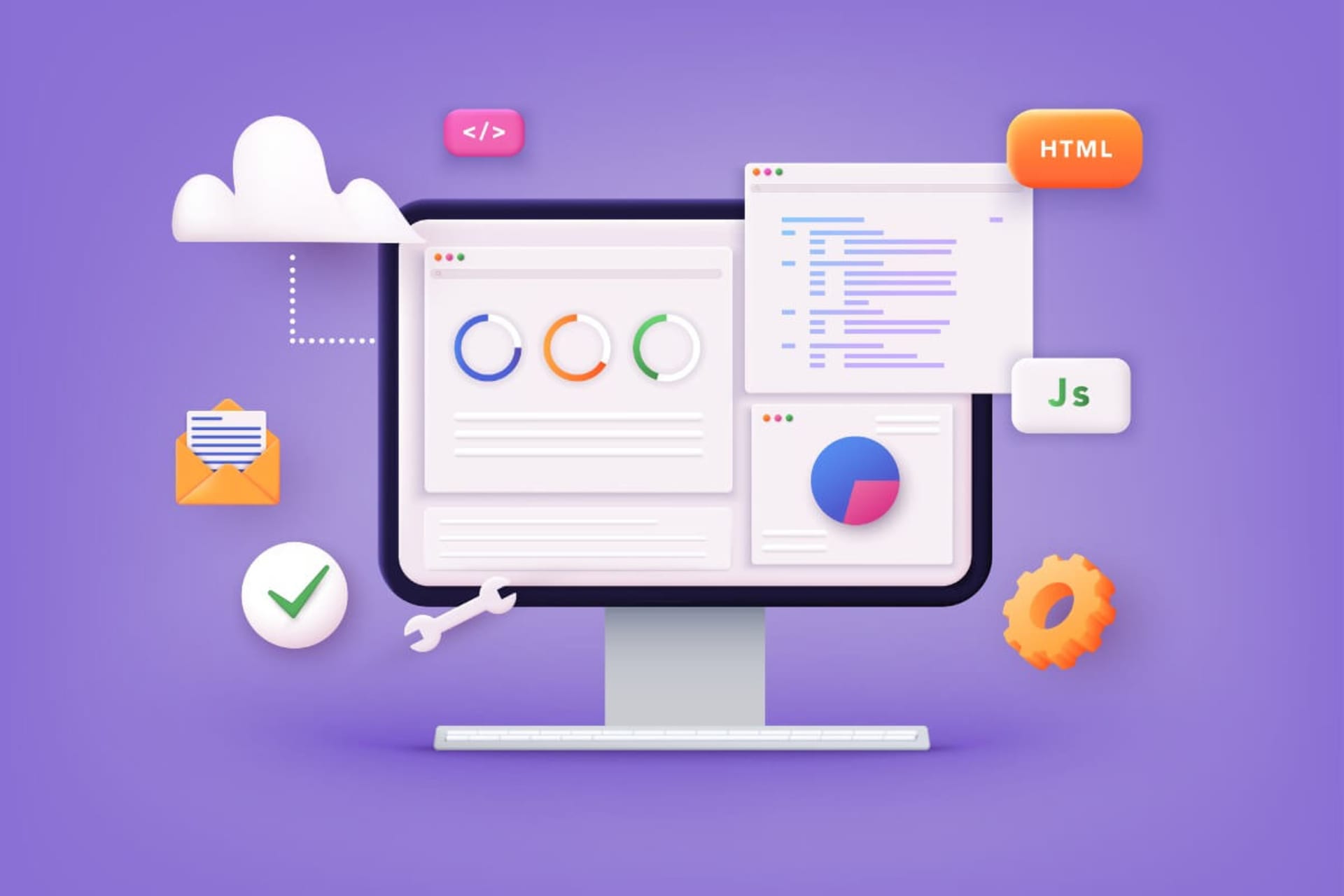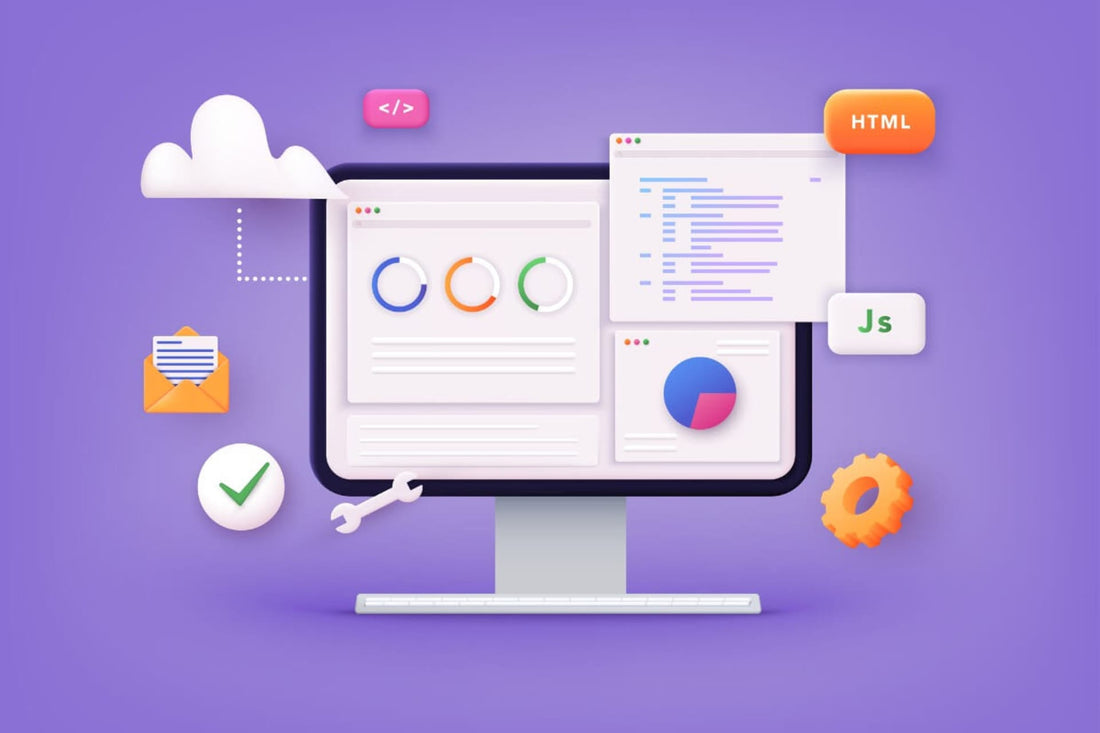The latest web development technologies allow you to create stronger, more attractive websites, helping you cultivate your digital presence.

Digital presence is critical now – even more so than before the pandemic wreaked havoc on our world. And yet only 71% of small businesses have their own website.
This may be, at least in part, because web development is not an easy or quick task. While low-code and no-code platforms have made the process more accessible to laypeople, building an attractive, functional, high-performance, and usable website or web application still requires extensive knowledge and programming knowledge. Fortunately, the latest web development technologies aid the development process by making it less complex and time-consuming.
How does the web development process work? And what can we expect it to be like in the future? Here's what you should know.
What is the future of web development in 2023?
Web development is still evolving. New web development technologies are constantly being introduced and gaining momentum every day. What's next on the field?
Artificial intelligence
One study found that 88% of consumers had at least one conversation with a chatbot in the previous year. And what is the backbone of chatbots? Artificial intelligence (AI).
AI already has a strong presence on websites and web applications. In 2023, web development must incorporate this important tool to modernize the product. This will extend far beyond chatbots, although in the not-too-distant future we can imagine that virtually all websites will take advantage of the virtual customer service agent, regardless of industry or niche. We will also see AI leveraged in areas such as semantic search tools and more personalized experiences.
Progressive Web Apps
Progressive web apps (PWAs), which are built with languages like JavaScript, HTML, and CSS, have been around for several years. These programs work like native applications, but do not need to be downloaded or installed. This means significantly faster loading times and a more seamless user experience. They can even be used offline. But at their core, they are actually websites – websites that look and behave like apps.
Big companies like Uber, Forbes, Starbucks, Instagram, Spotify and Twitter already offer PWAs. And by 2023, they could very well revolutionize the very concept of app and web development.
Voice Technology
You're probably familiar with voice interfaces like Siri, Alexa, Echo and the like. They are your personal digital assistants, meeting your most urgent needs. And they are also prepared to review your communications with websites.
As with chat bots , voice technology can meet your needs by offering increasingly complex guidance and responses. They are able to be conversational and approachable – and can take most of the work out of the hands of human representatives. Thanks to AI and automation, they will become a fixture on many websites in the coming year.
Responsive Design
Users are accessing websites and web applications in many different ways these days. They see them on cell phones, tablets and desktop computers. They are leveraging a variety of operating systems. They are using different brands and products. And companies need to ensure they are providing a consistent and optimal experience regardless of how consumers access their web platforms.
It is possible to offer a uniform experience thanks to responsive design . The latest web development technologies allow web pages to adapt to a variety of scenarios, interfaces, configurations, operating systems, and so on. This will be increasingly critical as more and more technologies are introduced to optimize the user experience. Personalization, customization, adaptability and versatility are key.
How to choose technology for your company's web development
When you're considering how to choose technology for web development , you'll have several different categories that you'll need to think about. We'll look at two of the most critical tools that are essentially the building blocks of web development: languages and frameworks.
Programming languages
There are 3 main languages you will need to use in web development: HTML, CSS and JavaScript. HTML creates the structure, CSS gives the product visual appeal, and JavaScript essentially brings the website to life by adding interactive and engaging features.
But you will need to incorporate additional programming languages into your toolkit to make your website not only functional but also user-friendly and engaging. Common languages for web development include:
- Phyton
- PHP
- Java
- Ruby
- Typescript
When choosing the best language for your project, consider factors like the community and features that come with it, the language's strengths — and what you need from it — its maturity, its scalability, and its security.
Structures
Web frameworks facilitate development, offering resources and tools that allow you to build your project faster and without so many hiccups. Common web development frameworks are:
- To react
- View
- Vibration
- At the
- Django
- WebAssembly
- Spring
- Express
- ASP.NET Core
When choosing frameworks for your project, think about elements like:
- Adaptability
- Community support available
- Hosting Requirements
- Industry and niche
- Licensing
- Available resources
- Omnipresence
- Usability and learning curve
There is no better technology for web development. Instead, developers apply a variety of languages, frameworks, environments, and other tools to create an easy-to-use, high-performance, and well-designed website or web application—platforms that will respond to the needs and wants of computers.
Digital technologies are constantly changing, so it's important to keep up with trends and news in the field to ensure you offer the best experience and create a strong online presence for your brand.
If you liked this, be sure to check out our other articles on web development.
- Top 8 Databases for Web Applications
- What is the difference between web and game developers
- The 5 best websites created with Python
- From Idea to Launch: The Software Development Journey
- The future of front-end development
Source: BairesDev




















































